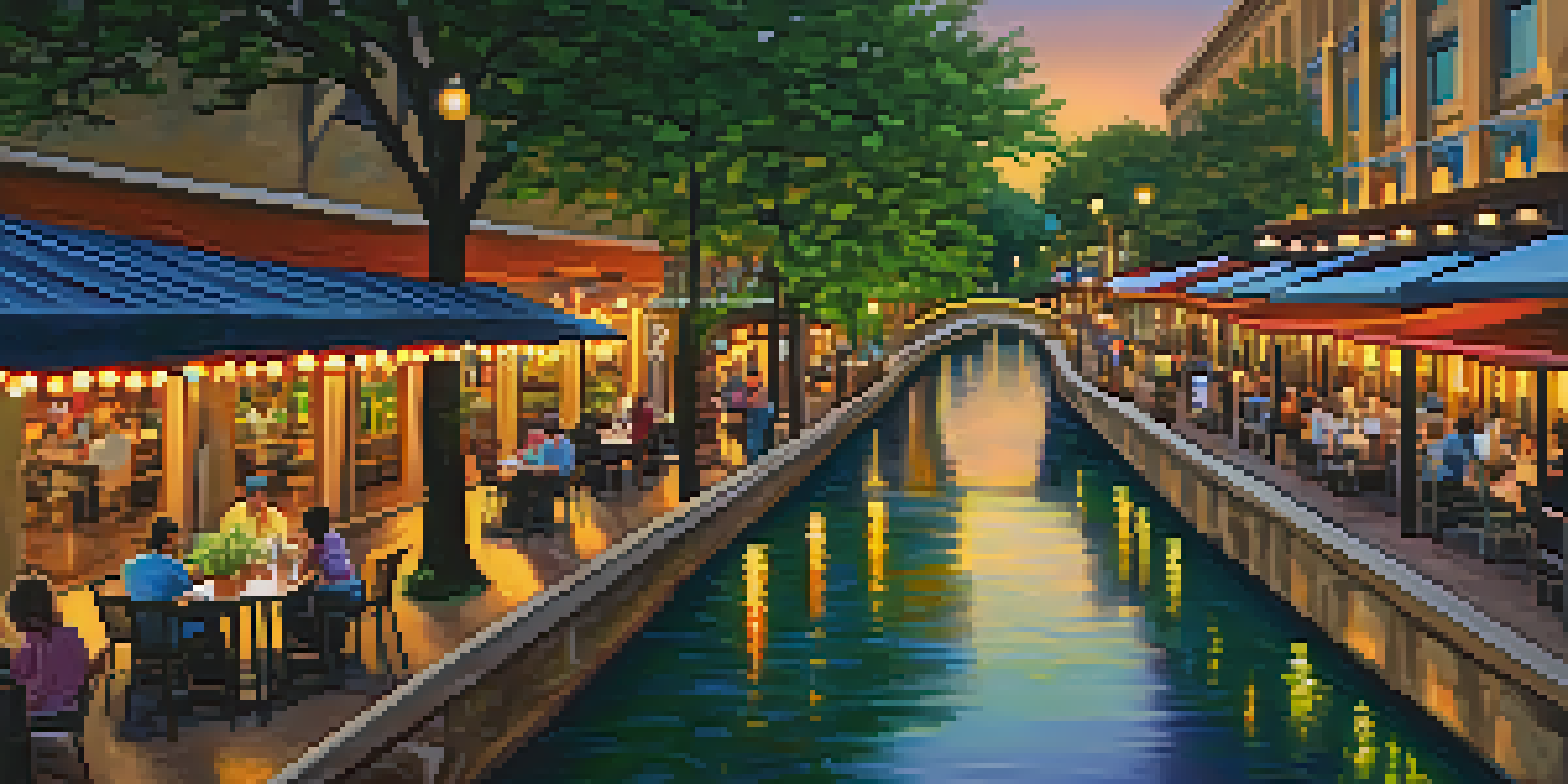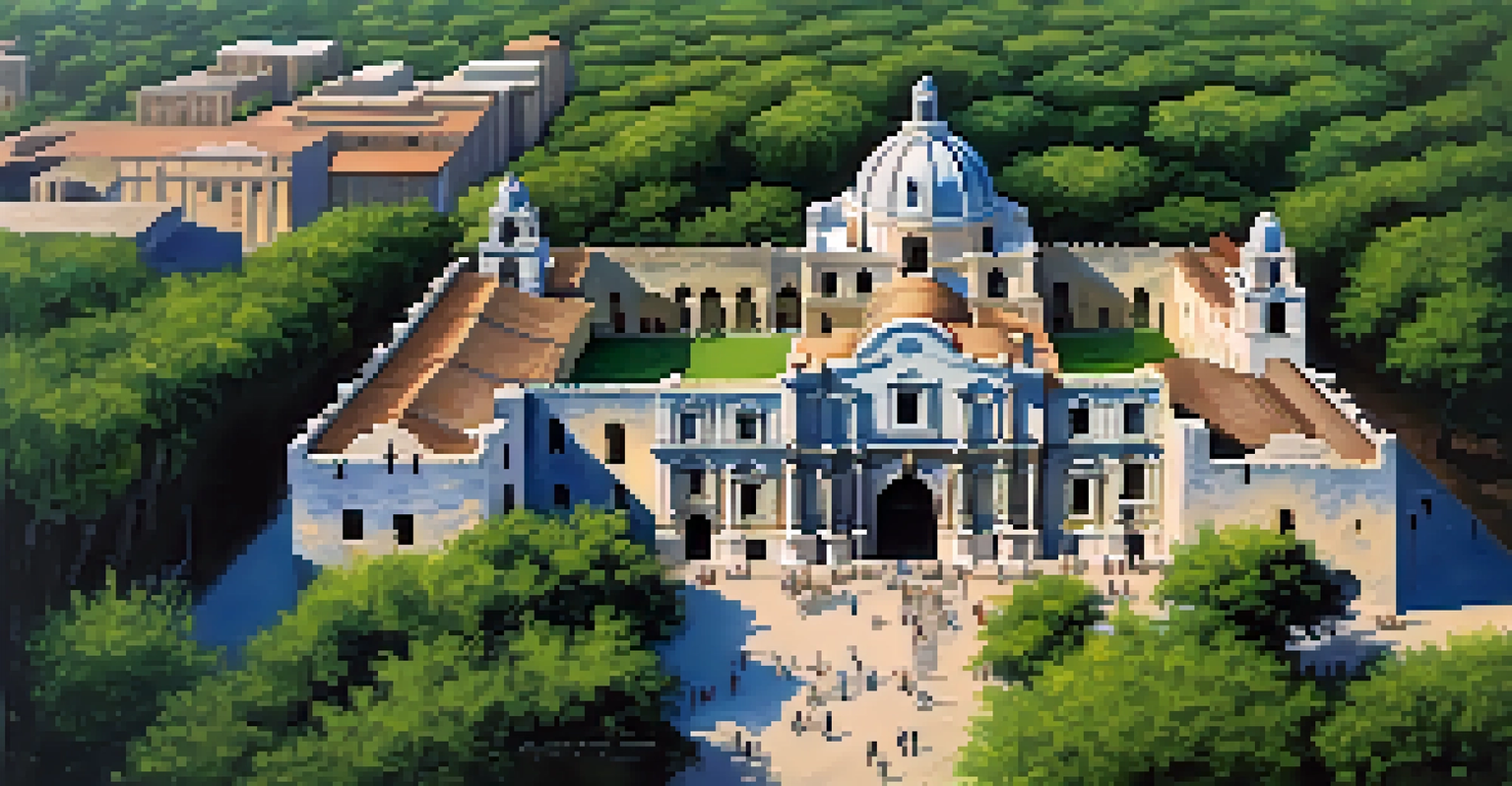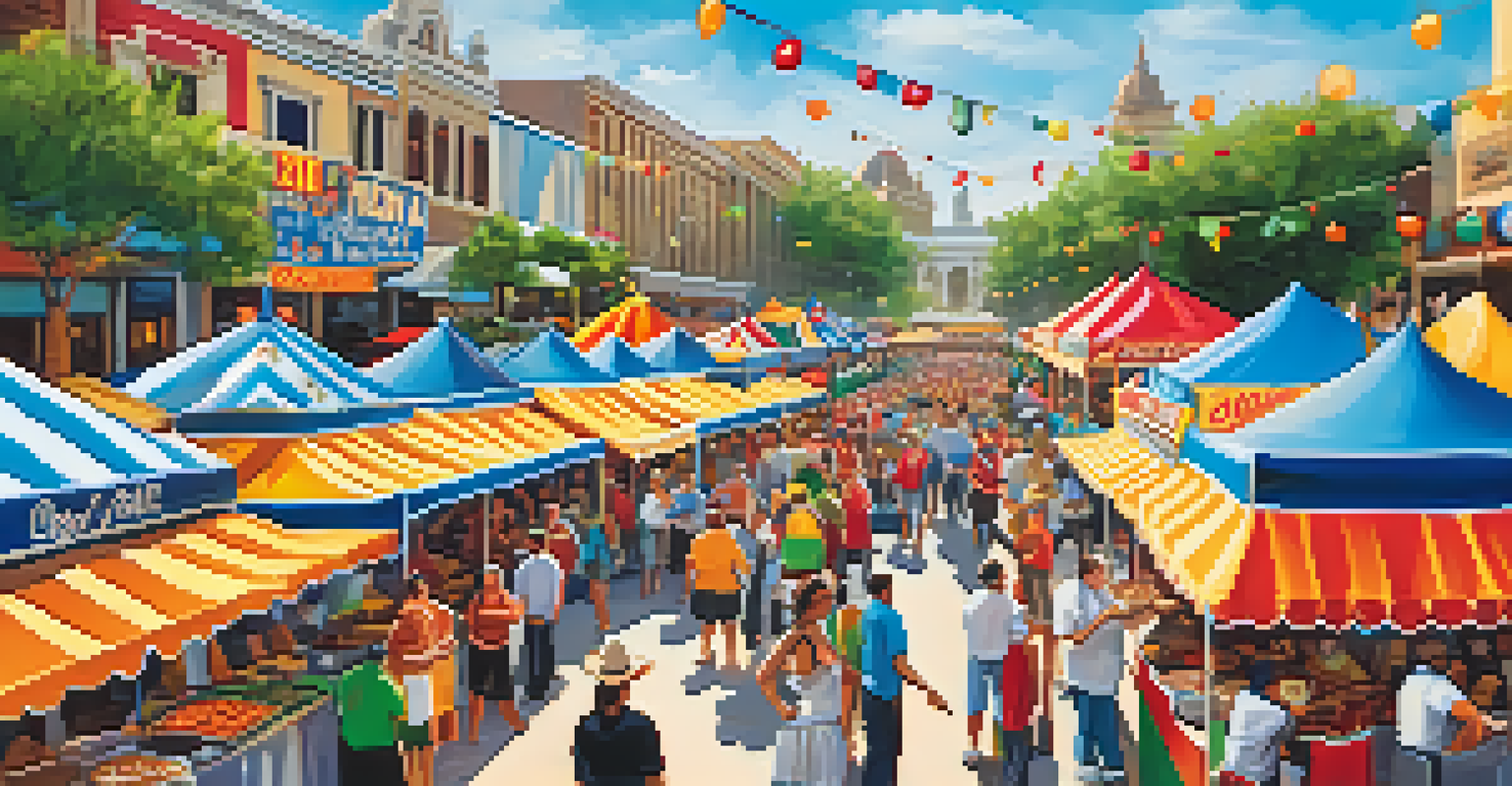Tourism in San Antonio: A Pillar of Economic Growth

The Role of Tourism in San Antonio's Economy
Tourism serves as a vital engine for San Antonio's economy, contributing significantly to job creation and local revenue. With attractions like the Alamo and the River Walk, visitors flock to the city, drawn by its rich history and vibrant culture. This influx results in millions of dollars spent on dining, entertainment, and shopping, benefiting local businesses.
Tourism is an essential part of San Antonio's economy, fueling job creation and fostering a vibrant community.
In 2022, tourism generated over $15 billion for the San Antonio economy, underscoring its importance as a financial pillar. The diverse array of attractions caters to all types of travelers, from history buffs to food enthusiasts, ensuring a steady stream of visitors year-round. As a result, local hotels, restaurants, and artisans thrive, creating a dynamic economic environment.
Moreover, the tourism sector supports a multitude of jobs across various fields, from hospitality to transportation. This not only strengthens the local workforce but also fosters an inclusive community that welcomes diverse cultures and backgrounds. Ultimately, the economic impact of tourism extends far beyond just the numbers; it enhances the overall quality of life in San Antonio.
Key Attractions Boosting Visitor Numbers
San Antonio boasts a variety of attractions that draw millions of visitors each year. The Alamo, a UNESCO World Heritage site, stands as a testament to Texas history, captivating tourists with its storied past. Meanwhile, the scenic River Walk offers a picturesque setting for leisurely strolls, dining, and shopping amidst lush landscapes.

In addition to historical sites, San Antonio is home to vibrant cultural festivals like Fiesta, which attracts thousands of participants and showcases the city's rich heritage. Events like these not only provide entertainment but also stimulate the local economy, as visitors spend on food, crafts, and accommodations. This cultural tapestry enhances the city's appeal as a tourist destination.
Tourism Drives San Antonio's Economy
Tourism significantly contributes over $15 billion to San Antonio's economy, fostering job creation and supporting local businesses.
Other attractions, such as the San Antonio Zoo and Six Flags Fiesta Texas, cater to families and thrill-seekers alike. These venues highlight the city's commitment to providing diverse experiences for all visitors, reinforcing its reputation as a must-visit location in Texas. The continuous development of new attractions ensures that there's always something fresh to explore.
Economic Impact of Conventions and Events
Conventions and large-scale events play a pivotal role in San Antonio's tourism landscape. The Henry B. Gonzalez Convention Center hosts numerous gatherings each year, from trade shows to corporate events, attracting thousands of attendees. These visitors contribute significantly to local businesses, filling hotel rooms and dining at local restaurants.
The culinary scene in San Antonio is a feast for the senses, attracting food lovers and enhancing our city's cultural identity.
In 2022, San Antonio hosted the annual Texas Library Association Conference, bringing in thousands of librarians and educators. The economic boost from such events is substantial, as attendees often extend their stays to explore the city. This trend not only supports existing businesses but also encourages new investments in hospitality and infrastructure.
Moreover, the city's strategic efforts to attract more conventions and events have paid off, increasing its competitiveness among other major cities. By enhancing facilities and promoting unique local experiences, San Antonio positions itself as an attractive destination for both leisure and business travelers. This dual focus on tourism and convention business creates a robust economic ecosystem.
Culinary Tourism: A Flavorful Attraction
Culinary tourism has become one of San Antonio's most enticing draws, showcasing the city's diverse food scene. From Tex-Mex to gourmet dining, the city offers a culinary journey that tantalizes the taste buds of every visitor. Food festivals like the San Antonio Food & Wine Festival celebrate local chefs and artisans, further promoting the city's gastronomic identity.
Every year, tourists flock to iconic eateries such as Mi Tierra Café and Market, which not only serve mouthwatering dishes but also provide a glimpse into the local culture. These dining experiences create lasting memories and encourage visitors to share their culinary adventures, enhancing word-of-mouth marketing for the city. It's a delicious cycle that keeps tourists returning.
Culinary Tourism Attracts Visitors
San Antonio's diverse food scene and culinary festivals enhance its appeal, drawing food enthusiasts and creating memorable experiences.
Additionally, culinary tours and cooking classes have gained popularity, allowing visitors to engage with local chefs and learn about traditional cooking methods. This immersive experience fosters a deeper appreciation for San Antonio's culinary heritage. Ultimately, the city's food scene not only satisfies cravings but also reinforces the local economy through increased tourism.
Outdoor Tourism: Exploring San Antonio's Natural Beauty
San Antonio's natural beauty provides an appealing backdrop for outdoor tourism, attracting nature enthusiasts and adventure seekers alike. With attractions like the San Antonio Missions National Historical Park and the scenic San Antonio River, there are ample opportunities for hiking, biking, and exploring the great outdoors. These outdoor experiences are perfect for families and individuals looking to connect with nature.
The city's mild climate allows for year-round outdoor activities, making it an ideal destination for those seeking sunshine and fresh air. Parks and green spaces, such as Brackenridge Park, offer a tranquil escape from the urban hustle. This accessibility to nature encourages visitors to engage in recreational activities while enjoying the scenic landscapes that San Antonio has to offer.
Moreover, outdoor festivals and events, such as the San Antonio River Walk's annual Fiesta Noche del Rio, combine culture and nature, inviting visitors to experience the best of both worlds. These gatherings not only celebrate the city's natural beauty but also promote community engagement and tourism. The blend of outdoor adventure and cultural richness makes San Antonio a unique destination.
The Role of Technology in Enhancing Tourism
Technology plays an increasingly crucial role in shaping the tourism experience in San Antonio. From mobile apps that offer guided tours to virtual reality experiences at attractions, tech innovations enhance how visitors explore the city. These tools make it easier than ever for tourists to navigate and discover hidden gems, ensuring they make the most of their time in San Antonio.
Moreover, social media has transformed how tourism is marketed, allowing local businesses to showcase their offerings to a broader audience. Platforms like Instagram and TikTok have become essential for promoting events, attractions, and culinary experiences, encouraging user-generated content that amplifies the city's appeal. This digital age enables San Antonio to connect with potential visitors in real-time.
Tech Enhances Visitor Experience
Innovations like mobile apps and social media marketing improve how tourists explore San Antonio, making it easier to discover attractions.
Additionally, the city's investment in smart technology, such as interactive kiosks and Wi-Fi hotspots in popular areas, enhances visitor convenience. By providing easy access to information and resources, San Antonio ensures that tourists have a seamless experience. The integration of technology not only enriches tourism but also positions the city as a modern and forward-thinking destination.
Challenges and Opportunities in Tourism Growth
As San Antonio's tourism sector continues to flourish, it faces several challenges that must be addressed to sustain growth. Issues such as overcrowding at popular attractions and the need for improved infrastructure can impact the visitor experience. Balancing economic growth while maintaining the city's charm and accessibility is a crucial task for local leaders and stakeholders.
Another challenge is the need for sustainable tourism practices that protect the city's natural and cultural resources. As more visitors arrive, it's essential to implement strategies that minimize environmental impact and promote responsible tourism. Initiatives like eco-friendly tours and conservation programs can help preserve San Antonio's unique identity for future generations.

Despite these challenges, opportunities abound for innovation and improvement in the tourism sector. Collaborations between local businesses and city officials can lead to creative solutions that enhance the visitor experience while supporting the local economy. Embracing these challenges as opportunities will ensure that San Antonio remains a vibrant and welcoming destination for years to come.